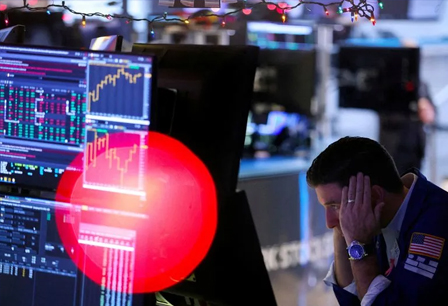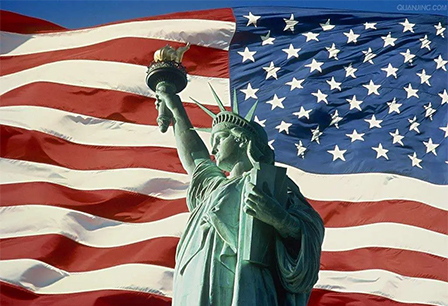Nobody sounds an alarm when the S&P 500 is due for a fall. But if you listen, you'll already hear some bells ringing.
Showing investors are getting uncomfortable with stocks' non-stop rally, even normally bullish analysts are calling for downside in seven hot S&P 500 stocks like Juniper Networks (JNPR), Etsy (ETSY) and Enphase Energy (ENPH), says an Investor's Business Daily analysis of data from S&P Global Market Intelligence and MarketSmith.
And that's saying something.
It's tough to bet against any of these S&P 500 stocks. They're all up anywhere from 36% to 93% this year. That easily tops the S&P 500's 25% rise this year. But they're also pricey based on traditional measures. All are trading for at least 70 times their earnings the past 12 months, which is double the S&P 500's already lofty valuation.
And analysts think all of them are already trading at or beyond what they should be worth in 12 months.
"There's been so much anxiety about inflation and interest rates that investors are clearly apprehensive about over-committing," said Craig Erlam, senior market analyst at Oanda.
S&P 500 Blasting Off
There's no doubt about it. The S&P 500 is on fire.
The SPDR S&P 500 Trust (SPY) is up more than 25% this year. And that's already one for the record books. "There are only six weeks to go in 2021 and it has been an incredible year for the stock market bulls. In fact, in many ways it could go down as one of the best years ever," said Ryan Detrick, market strategist for LPL Financial.
It's been a straight-up rally. If the S&P 500 ended the year at current levels, it would be up at least 15% annually for three-straight years, Detrick says. That's only happened one other time in history: the amazing five-year winning streak in the late 1990s.
But warnings that stocks are getting ahead of themselves, or extended, are starting to pile up. And that's especially true when even normally bullish analysts wave warning flags.
Analysts Sound Off On S&P 500 Tech
Not surprisingly, S&P 500 analysts are finding the most pockets of overvaluation in technology. The tech-heavy Nasdaq 100 (QQQ) is up more than 27% this year. That's outstripping all the major indexes.
All told, more than half of the S&P 500 stocks with P-E ratios of 70 of more, which analysts say are already trading past their 12 month price targets, call the information technology sector home.
Juniper Networks is a case in point.
The advanced networking gear maker's shares are up 44% this year to 32.40 and trading for 72 times earnings in the past 12 months. Normally that sounds like a red-hot stock analysts would pile onto. But they're saying shares are already nearly 13% higher than what they should be in 12 months. Analysts rate the stock a "hold," which some on Wall Street interpret as a sell signal. And shares are nearly 9% past their 29.97 buy point, says MarketSmith.
What's Next?
But it's not just S&P 500 tech stocks that analysts are getting uncomfortable with.
Analysts think consumer discretionary stock Etsy overshot its 12-month price target by 9%. Shares of the stock are up an impressive 57% this year to 279.24. And they trade for nearly 83 times its proThe number of Americans applying for first-time jobless claims reached the lowest level since November 1969, with the number of filings dropping to 199,000.
Improvements in the labor market have been broad-based, with the weekly rate of those rendered newly unemployed falling precipitously across the country since the height of the COVID-19 pandemic last year.
As usual, the Labor Department's latest weekly report included a breakdown of the states and territories with the highest and lowest insured unemployment rates, or the ratio of people claiming jobless benefits divided by the overall size of the labor force. For a number of states, this key labor market metric improved to its best level in two years, showing an even smaller proportion of their populations were claiming jobless benefits than before the coronavirus outbreak.
"I don't even think you can call it an economic recovery anymore," Chris Rupkey, chief economist for FWDBONDS, told Yahoo Finance Live. "Remember the best economy in 50 years late in 2019? Well, we're way, way, way above that right now. I don’t even think you can call this a reopening of the economy after the pandemic — we’re miles and miles ahead of the fourth quarter of 2019.”
South Dakota was the state with the lowest insured unemployment rate. As of the week ended Nov. 6, the state's rate was at 0.2% on a seasonally unadjusted basis. The last time this figure was below that level was in October 2019.
The national average insured unemployment rate was at 1.3% for the same week, or the lowest since December 2019. At its worst pandemic-era point in May 2020, during widespread lockdowns and layoffs, the insured unemployment rate peaked at 15.9% nationally.
Other states also posted insured unemployment rates well below the national average. Alabama's insured unemployment rate for the week ended Nov. 6 came in at 0.3%, or the lowest on record for the state based on data spanning back to the 1980s. Nebraska's rate also came in at 0.3% for the period, marking a two-year low.
Five states — Kansas, New Hampshire, North Dakota, Utah and Virginia — posted insured unemployment rates of 0.4% for the start of November, also representing a marked improvement from their pandemic-era highs.
A little less than half of U.S. states and territories — or 19 in total — posted insured unemployment rates at or above the national average at the start of the month. Of these, the Virgin Islands saw the highest rate at 3.0%, which marked a slight uptick from the prior week's 2.2% rate. Still, this was well below its pandemic-era peak of nearly 18% in June 2020.
Meanwhile, Puerto Rico, Washington, D.C., and Alaska each posted insured unemployment rates of 2.7%, tying for the second-highest rates in the nation, based on the latest data. California followed close behind with an insured unemployment rate of 2.6%. Many of the states posting persistently elevated insured unemployment rates have been those that rely heavily on tourism and their service economies, given the ongoing recovery still taking place in these industries after the outbreak.
"Workers remain in high demand in a labor market where payrolls and the civilian labor force remain well below pre-pandemic levels," wrote Rubeela Farooqi, chief U.S. economist for High Frequency Economics, in a note Wednesday morning. "Developments on the health front remain a risk that may weigh on labor supply, but we expect workers to gradually return to the labor market, as the cushion from savings diminishes, supporting job growth over coming months."fit the past 12 months.
Not all think the S&P 500 is in big trouble, though. "We should be extremely grateful for how strong 2021 has been, and we think the bull market for stocks should continue into 2022 as well," Detrick says. And some companies, like well-run Enphase, continue to rally faster than analysts can catch up.
But when even analysts are sounding bells, it's wise to at least listen.
Pricey S&P 500 Stocks Analysts Think Face Downside
All trade for 70-times trailing earnings, twice the S&P 500












